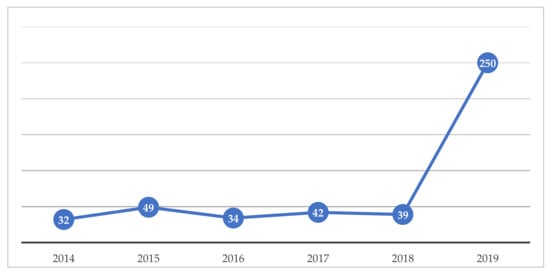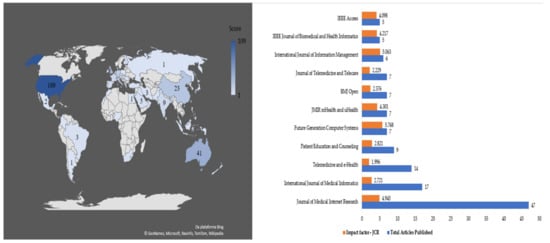You're using an outdated browser. Please upgrade to a modern browser for the best experience.
Please note this is a comparison between Version 1 by Bruno Pedroso and Version 2 by Camila Xu.
E-health can be defined as a set of technologies applied with the help of the internet, in which healthcare services are provided to improve quality of life and facilitate healthcare delivery.
- e-health
- ehealth
- practices
- technologies
1. Introduction
Digital change has been particularly challenging in healthcare, as there is growing demand for services due to the aging population and the emergence of new diseases. Thus, investment in new treatments is necessary so that everyone has equal access to the healthcare system [1][2][3][1,2,3]. E-health involves practices such as mhealth and telehealth that employ electronic technologies to provide healthcare resources, services, and information [4].
Mobile health or mhealth consists of the use of mobile devices so that patients can solicit services electronically, use apps to verify information, and manage or monitor treatment or problems or other health-related issues [5]. Telehealth can be defined as the use of telecommunication technologies to promote the care and education of patients and professionals working in the area [6].
E-health has become an integral part of the healthcare system as it addresses a range of difficulties in medicine, including reducing errors and providing more efficient services with more accurate results [7]. Such is the case with the use of electronic medical records, in which all information about a patient is stored, thus preventing inappropriate administration of medication during medical care and ensuring that the patient is treated quickly and comfortably [8]. However, its implementation depends on adequate planning and strategies so that virtual medical care can be performed [3].
The success of e-health in a country is related to several factors, including user acceptance and the types of infrastructure, systems, and management used [6][9][6,9]. Meanwhile, there are four stakeholders involved in the outcomes: entrepreneurs, healthcare professionals, patients, and those responsible for health insurance and assistance policies [10]. To effectively implement the use of information technologies in healthcare, e-health strategies must occur in an integrated manner, including the development of norms, laws, or regulations. This situation is valid whether in the fields of telehealth and mhealth, or specific categories such as electronic medical records or health literacy—eLearning (learning in health) [5][11][12][5,11,12].
The e-health strategy has three main components: (i) knowledge management; (ii) tools and methods; and (iii) policies. These components work to consolidate healthcare systems with support networks and scientific and technological production, manage infrastructure and human resources, reduce barriers to accessing health services, and promote community inclusion [13]. Some barriers to e-health include the difficulties faced when using systems and applications, both by healthcare professionals and patients, as well as ensuring the security and privacy of user data transmitted throughout these systems [12].
Another challenge in e-health is interoperability across systems. That is, new e-health systems must interact with existing ones, and there should be a standard electronic language between hospitals (or clinics) to facilitate communication and data exchange, as well as formal agreements on how the system should work in a standardized way [14][15][14,15]. Further, the cost of implementing e-health also presents challenges, which may make the implementation of such systems unfeasible. This is related to the high levels of investment required to purchase equipment to implement more sustainable practices [3][16][3,16] than traditional systems that store paper records, alongside the costs of hiring specialized support personnel in information technology (IT) to keep the systems running and software acquisition [8][17][8,17].
2. Bibliometric Analysis
Figure 2 shows the number of publications per year from 2014 to 2019.
Figure 12.
Number of publications per year.

Figure 23.
Distribution of articles by country and number of articles published by journal.
